Shawford Park, Hampshire, an idyllic 17th century house by the river where 'the old and the new spark off each other'
John Goodall visits Shawford Park, Hampshire, the home of Peter and Elisabetta Mallinson, and finds an idyllic 17th-century house set between two branches of the River Itchen. All photographs by Paul Highnam for the Country Life Picture Library.
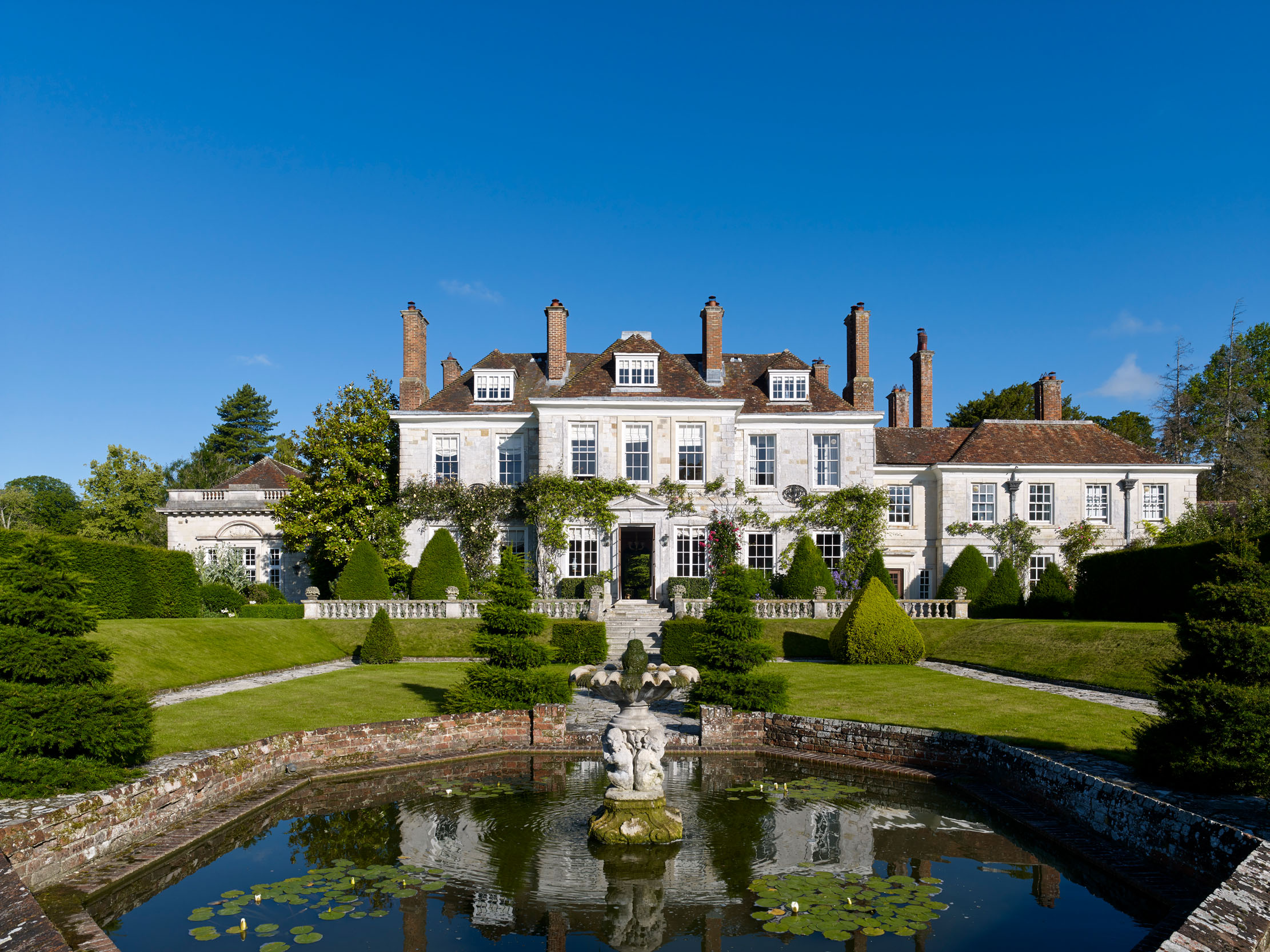

In August 1682, Winchester opened its gates to receive Charles II. For the ageing monarch, bruised by the recent attempts of Parliament to bar his Catholic brother from succeeding to the throne, his stay proved a great success.
The Hampshire city was welcoming — unlike London with its unpredictable crowds — and offered excellent hunting and horse racing. In the cathedral, he performed the ritual of the touching for the King’s evil and was reported to have cured about 60 people from the affliction of scrofula.
The visit had one completely unexpected result: Charles II determined to build a palace in Winchester (Country Life, March 3, 2005). Speed was of the essence. ‘If it be possible to be done in one year,’ the King observed, ‘I will have it so; for a year is a great deal in my life.’ Following a prolonged visit the next summer, the Earl of Sunderland predicted: ‘We are like to be here twice a year, the King growing fonder of his building and the country every day.’ No doubt aware that Louis XIV had abandoned the Louvre for rural Versailles that same year, the ambitious began to look for residences in and around Winchester.
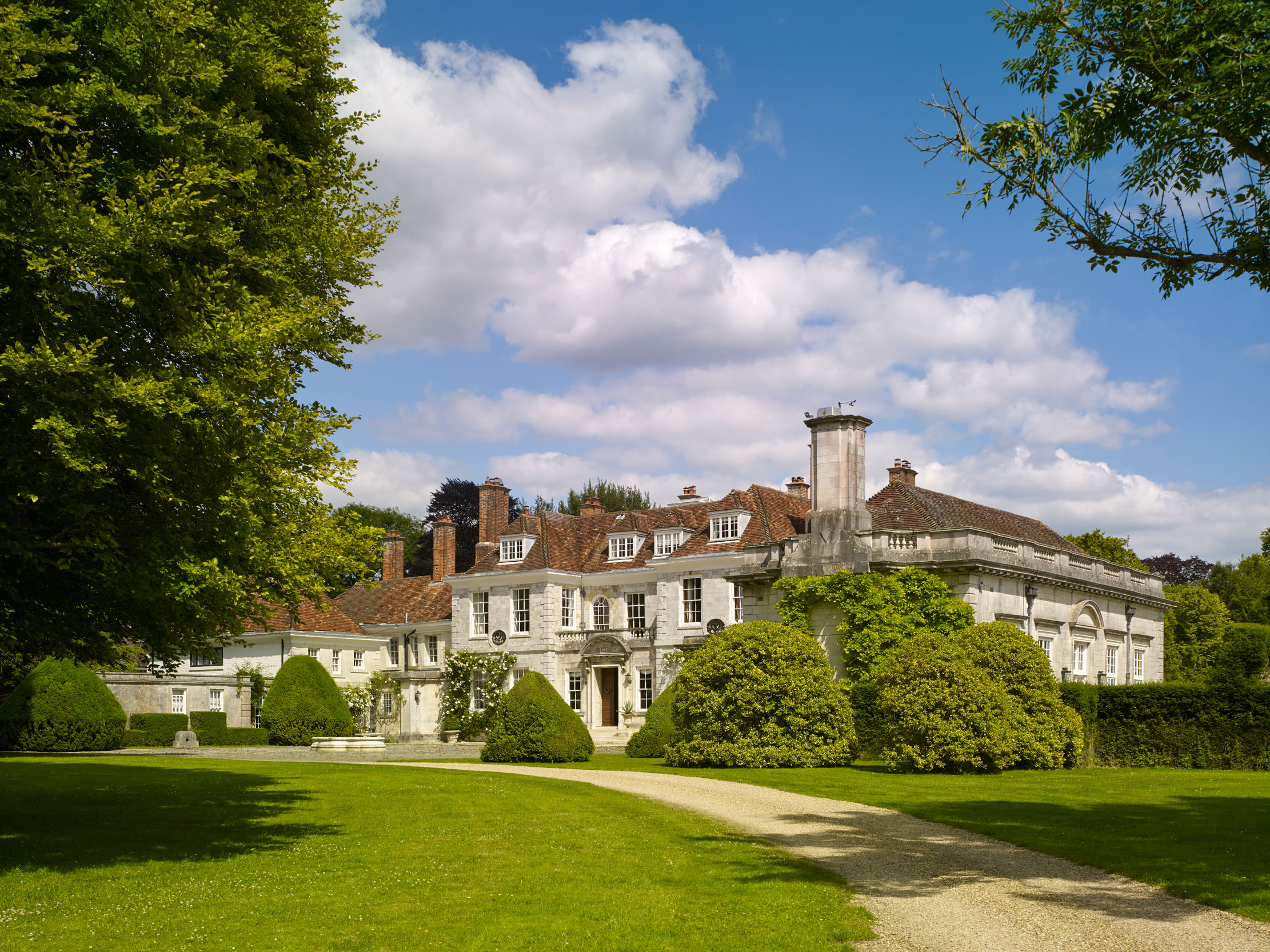
In the light of these events, it can’t be merely a coincidence that the landowner and lawyer Henry Mildmay laid the foundations of Shawford Park, just south of Winchester, in April 1685. Henry’s father, Sir Henry, was an intimate of James I and, in 1618, was personally recommended by the King as an appropriate husband for Anne Halliday, the daughter of a London alderman. In 1625, by the terms of her father’s will, Anne received money in her own right, which she invested in the manor of Twyford and Lower Marwell, Hampshire, before her death in 1656.
By this time, Sir Henry had supported Parliament in the Civil War and been involved in the trial of Charles I. As a result, in 1660, he was arrested and sentenced to life imprisonment, with the additional annual humiliation of being dragged on a sledge with a noose around his neck on the anniversary of the King’s execution.
He was also stripped of rank, title and properties, with the sole exception of his wife’s Hampshire estate, which became Mildmay’s inheritance.
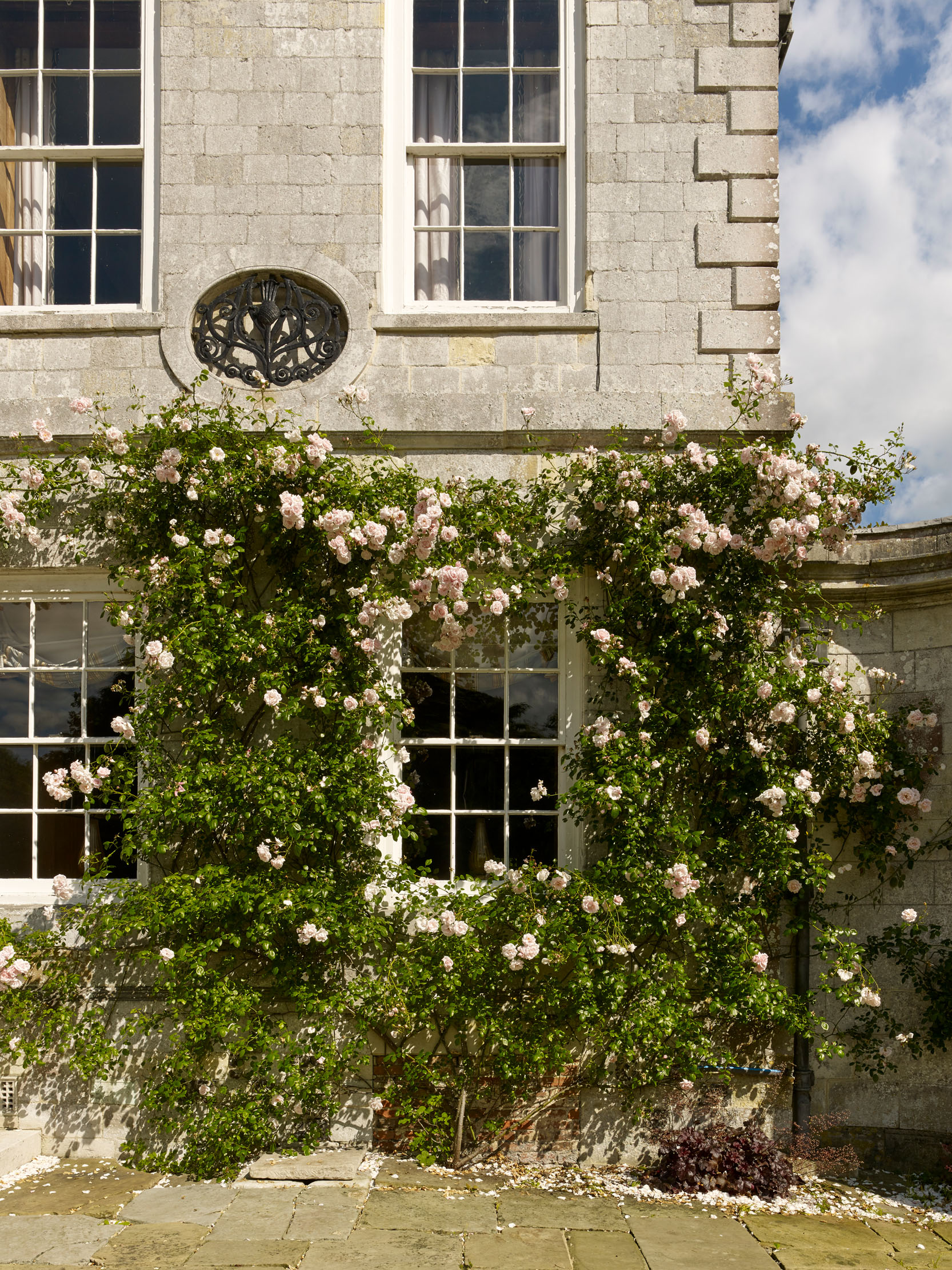
Mildmay enrolled himself as a barrister at Gray’s Inn and began a successful legal career. In November 1669, he was sworn in as Sheriff of Hampshire, but asked for permission to leave the county during his period in office, clear evidence that the focus of his interest lay in London.
Sign up for the Country Life Newsletter
Exquisite houses, the beauty of Nature, and how to get the most from your life, straight to your inbox.
It was in this role that he probably first met Charles II, accompanying the King across Hampshire on a journey from London to Southampton in 1669. On the return leg, Henry ‘attended him to Twyford, where he discharged me after he had druncke a glasse of sacke’.
In the 1670s, Mildmay began to improve his Twyford estate, building new farms and experimenting with such new ideas as the creation of water meadows. He also acquired a neighbouring property called Dares, within a bifurcation of the River Itchen about two miles south of Winchester, in 1673. The purchase may have been made in anticipation of his marriage the following year to Alice Bramston, the daughter of the master of the High Court of Chancery.
In 1678, Mildmay greatly improved the house, but then, almost certainly in response to Charles II’s new palace, he began what is familiar today as Shawford Park in 1685.
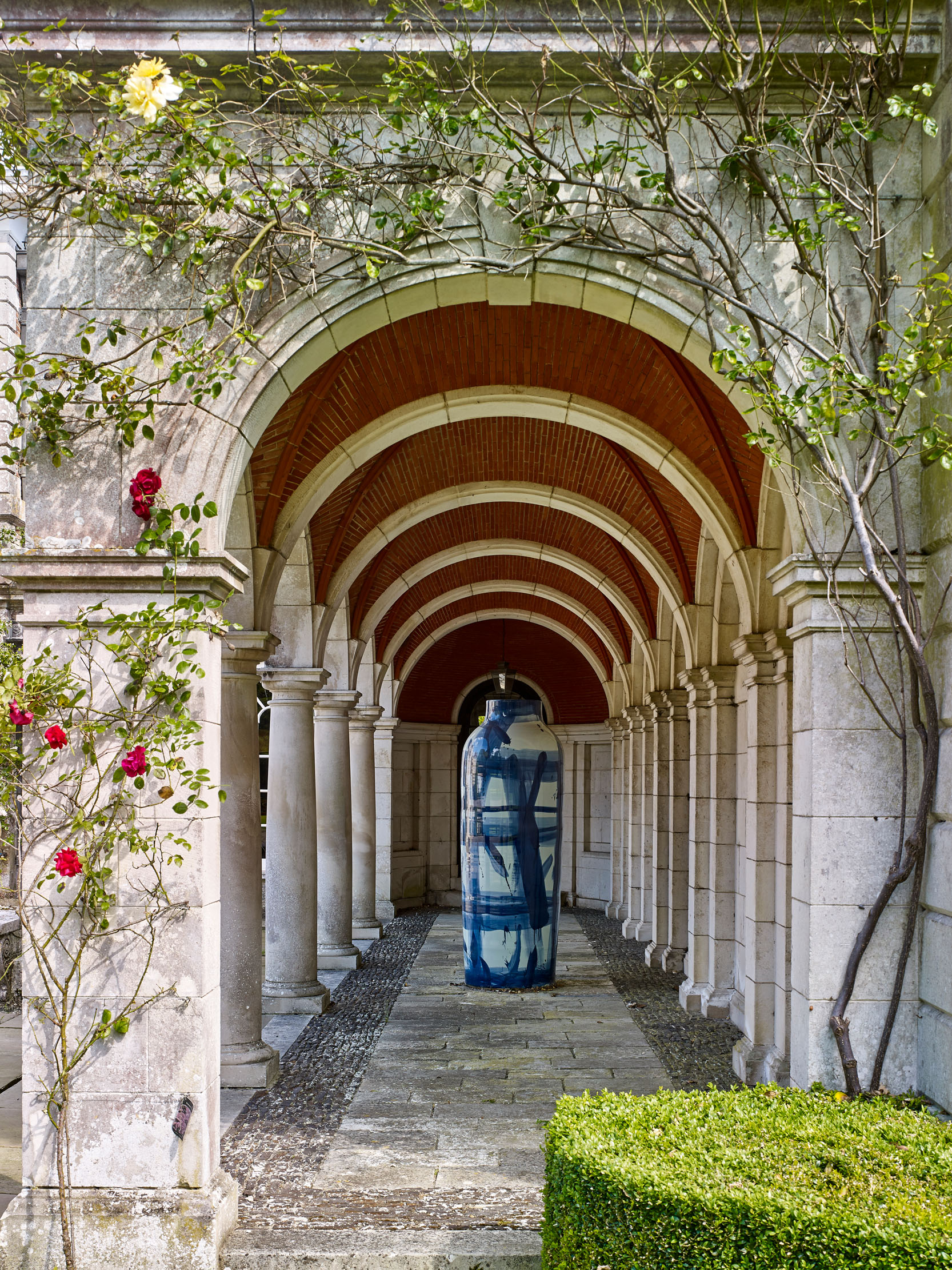
Charles II died in January 1685, three months before the foundations of the new building were laid. Mildmay probably wasn’t too concerned, however, because, during the spring, James II approved money to complete the ‘Shell of the Fabrick’ of Winchester Palace. Unfortunately, the King’s enthusiasm soon waned and, in September, the diarist John Evelyn noted that ‘his now Majestie did not seem to encourage the finishing’ of his brother’s venture. Henry, however, was by now committed to his new house.
The building was compactly and symmetrically planned with a central block two rooms deep sandwiched between two wings. As with Winchester Palace, the house incorporated the novelty of sash windows and the external angles were articulated with boldly rusticated blocks of stone. The name of the designer — probably a London surveyor — is unknown, although the surviving building accounts, studied by Maureen Gale (Hampshire Field Club and Archaeological Society, 21, 1994), identify the principal mason as one Anthony Small.
The accounts also clarify some aspects of the original interior, which comprised two principal floors raised over a basement. An attic level within the hipped roof was lit by dormer windows and surmounted by a leaded platform enclosed with balustrades.
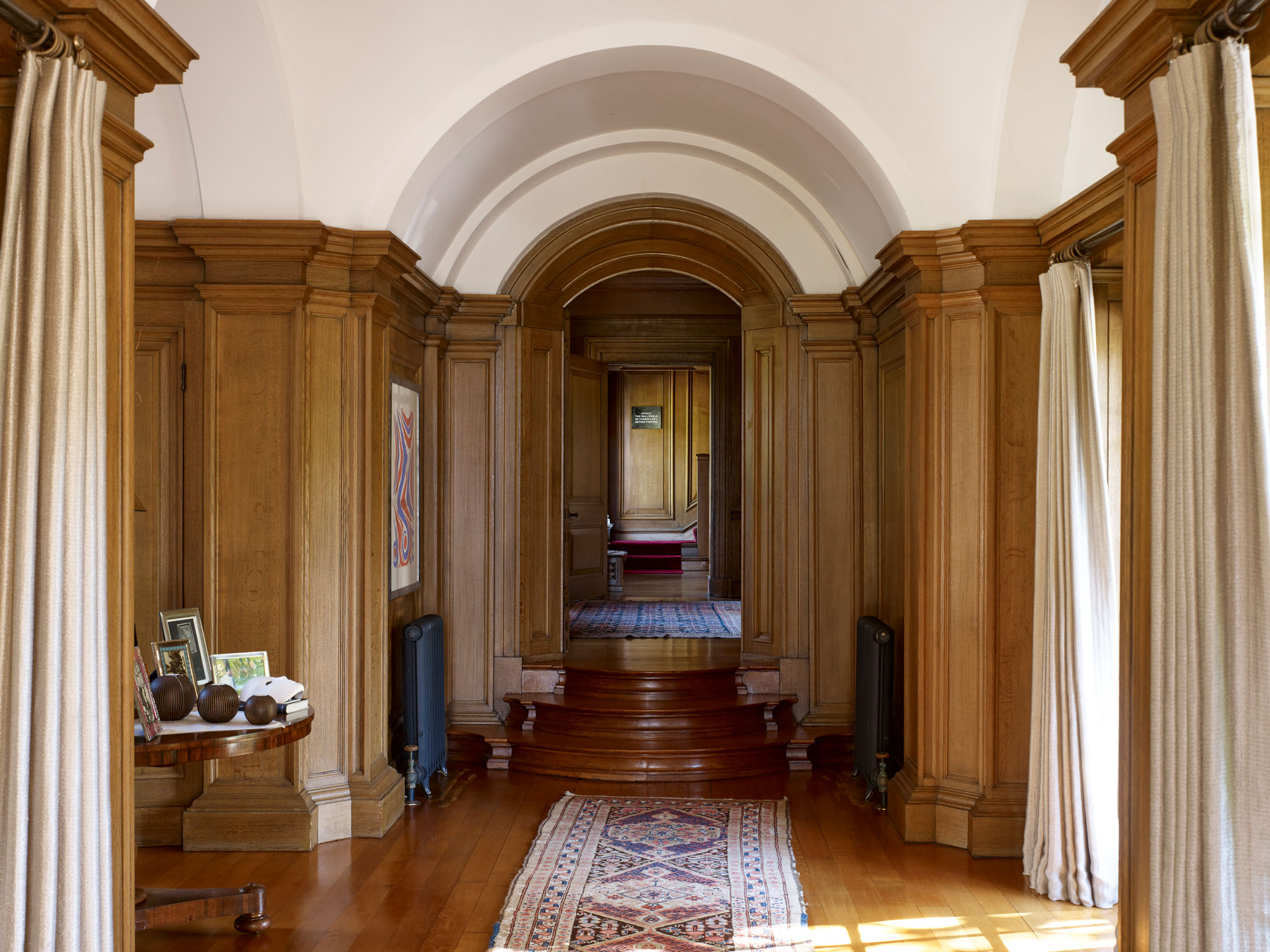
This platform, which afforded views over the extensive gardens and orchards, has since been removed, together with a central cupola. The entrance hall was paved in Purbeck slabs and wainscoted with oak, as was the main stair. There was a running water supply and numerous service buildings, some of them inherited from the earlier house, to the north of the main block.
Mildmay took up residence in August 1686, before the building work was completed in 1687. By this time, however, he was at loggerheads with his wife and father-in-law. She died in 1692 and his son, Halliday, also predeceased him in 1697, leaving a daughter, Letitia, who was soon afterwards abducted from her school in Winchester and taken to live with her Bramston grandmother. Before he died in 1705, however, Mildmay made his granddaughter Letitia heir to his estates, on condition that she marry one of two brothers in a collateral family line.
That requisite match took place in 1706 (when Letitia was 12) and later produced four children. The most long-lived of these, Jane, died at the age of 92 in 1857 and, with her husband Sir Henry Paulet St John, inherited by degrees the entire Mildmay family patrimony as amassed since the 16th century.
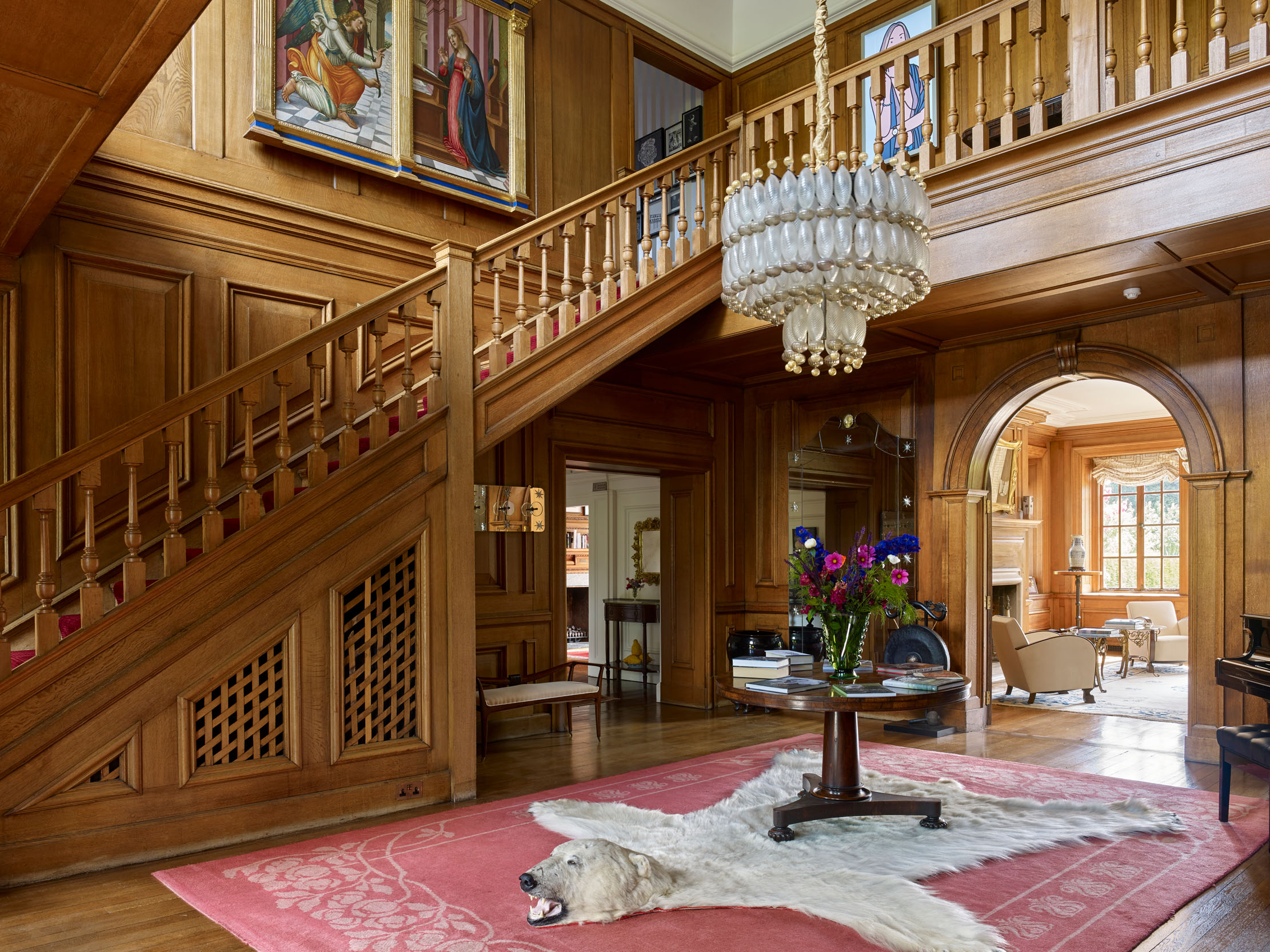
Shawford was one of many houses in her possession and was leased out. It was then sold, first to its tenant, Gen Frederick, and then by his son to Bradley Firth. The building we see today, however, was effectively created by the remarkable figure of Mrs Alfred Morrison, who purchased it in 1911.
Mabel Chermside, as she was born in 1847, enjoyed a childhood filled with travel. A noted beauty, she married Alfred Morrison at the age of 19 in 1860. Morrison, who lived at Fonthill, Wiltshire, was a full 25 years older than his new wife, vastly rich and one of the most discerning collectors of the late 19th century. The marriage surprised his family, but it was a happy one and produced five children (although one died in infancy).
Mabel shared in the intellectual interests of her husband and may well have been the driving force behind the redecoration of the couple’s London home, 16, Carlton House Terrace, SW1, overseen by influential colour-theorist and designer Owen Jones (Country Life, May 18, 1989). It’s a remarkable house, but a greater contrast to Shawford, which Mabel bought as a widow, is hard to imagine.

By 1911, the Hampshire house had lost its 17th-century stairs and much of its original wainscoting. A projecting entrance had also been added ‘in the French Rococo style’. Mabel turned to Harry Herbert Jewell to restore the building, although Jewell had no obvious experience to suit him to the task. He had been selected in 1909 as the gold medallist and travelling student in architecture of the Royal Academy, so the commission must have come almost at the moment of his return to England from drawing churches in Athens. It would be fascinating to know how he came to Mabel’s attention.
With the builders Goddard & Sons, Jewell removed the projecting entrance and replaced it with the present convincing ‘Wrenaissance’ front door. Internally, he created a new staircase hall and reconfigured the interior of the main block.
On a cross axis to either side of the main entrance, he carved a stylish Italianate dining room out of the existing service wing and built a corresponding saloon wing. The latter incorporates a loggia clearly inspired by 17th-century Dutch example.
Mabel obviously played an important role in the restoration and also excavated the formal garden, rediscovering elements of its 17th-century predecessor in the process. An account of Mabel’s life by Edith Olivier (privately published in the 1930s as the preface to a fragmentary manuscript The Quest of Joy) gives a vivid sense of her formidable personality. In later life, she dressed like ‘a French lady of the time of Louis XVI’, with her hair piled up, and loved ‘fine stones’. She usually wore ‘magnificent pearls, white and black’. Rudyard Kipling, a friend, dubbed her the ‘Queen of Sheba’.
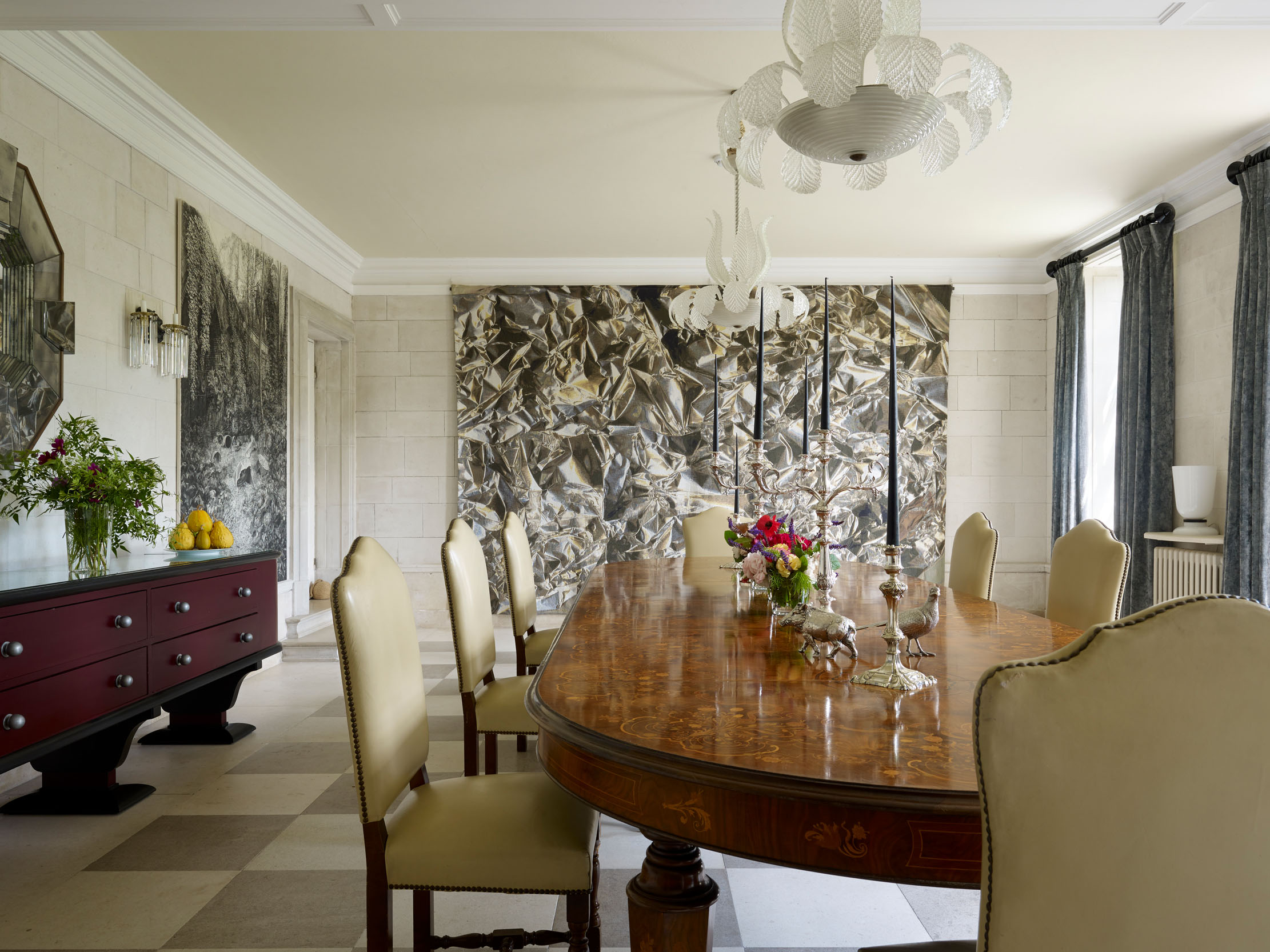
In several issues in August 1920, Shawford and Mabel’s collection were described at length by Country Life. The one room that was omitted from the articles was the new saloon, which — the text explains — was then being used as a hospital.
Three years later, Mabel sold Shawford to the Yorkshire MP and Conservative whip Col Roundell. His wife, Beatrice, was an expert horsewoman and trainer, but a serious hunting accident made her a noted angler as well, which perhaps explains the purchase of a house on the River Itchen with its celebrated fishing. The Roundells also set up a model farm, run by their daughter, attached to the house.
During the Second World War, a maternity ward from Southampton Hospital was moved into Shawford and, in the 1950s, the interior was restored by Sir Brian and Lady Mountain. Further repairs followed a serious fire in the 1970s.
The present owners, Peter and Elisabetta Mallinson, acquired Shawford in 2006 and have splendidly revived it as a collector’s home, with an eclectic mix of Old Master and contemporary art. Mrs Mallinson trained as a paintings conservator in Florence and has relished the task. ‘The old and the new spark off each other, creating new and interesting visual connections,’ she explains.
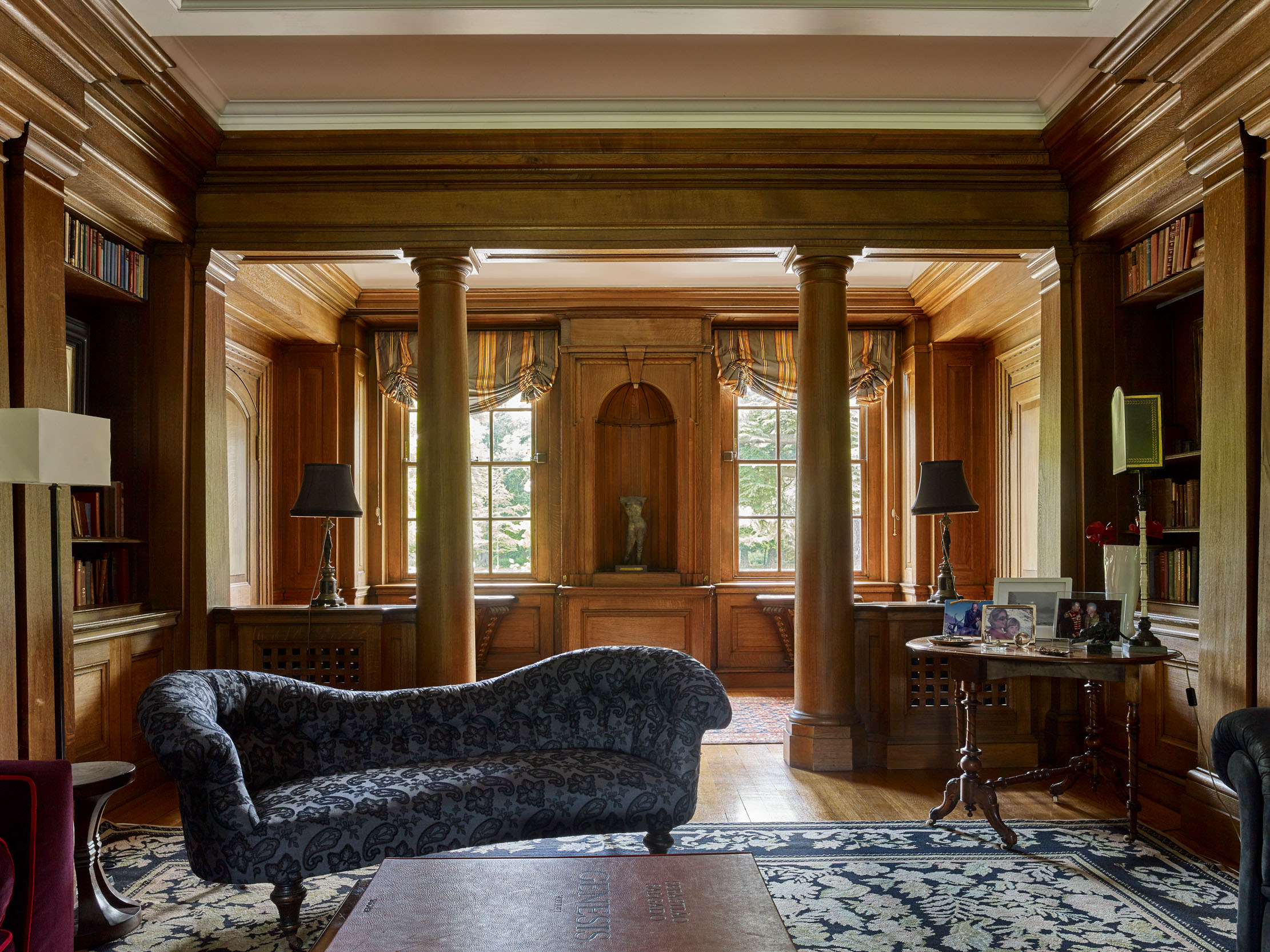
The Mallinsons have restored the house over many years, starting in the kitchen and with the complete repair of the roofs. Subsequently, they have worked through the whole building; much of the internal work focusing on the repair and improvement of the fixtures and fittings. The panelling throughout, for example, was cleaned of dirty varnish and re-waxed, returning the rooms to their Edwardian appearance. At the same time, the dining-room walls were stripped back and the floor revealed.
Outside, Kim Wilkie was commissioned to adapt the garden. The first idea was to develop a kitchen garden, but the status of the landscape as a SSSI suggested otherwise. A polo pitch to the south of the house created a dull setting, so Mr Wilkie landscaped it with sinuous rills that run through gently undulating hillocks. Lining this landscape to the east is a dense plantation of more than 1,000 new trees and the river is being exactingly managed. The result has been a proliferation of natural life, including rare mayfly.
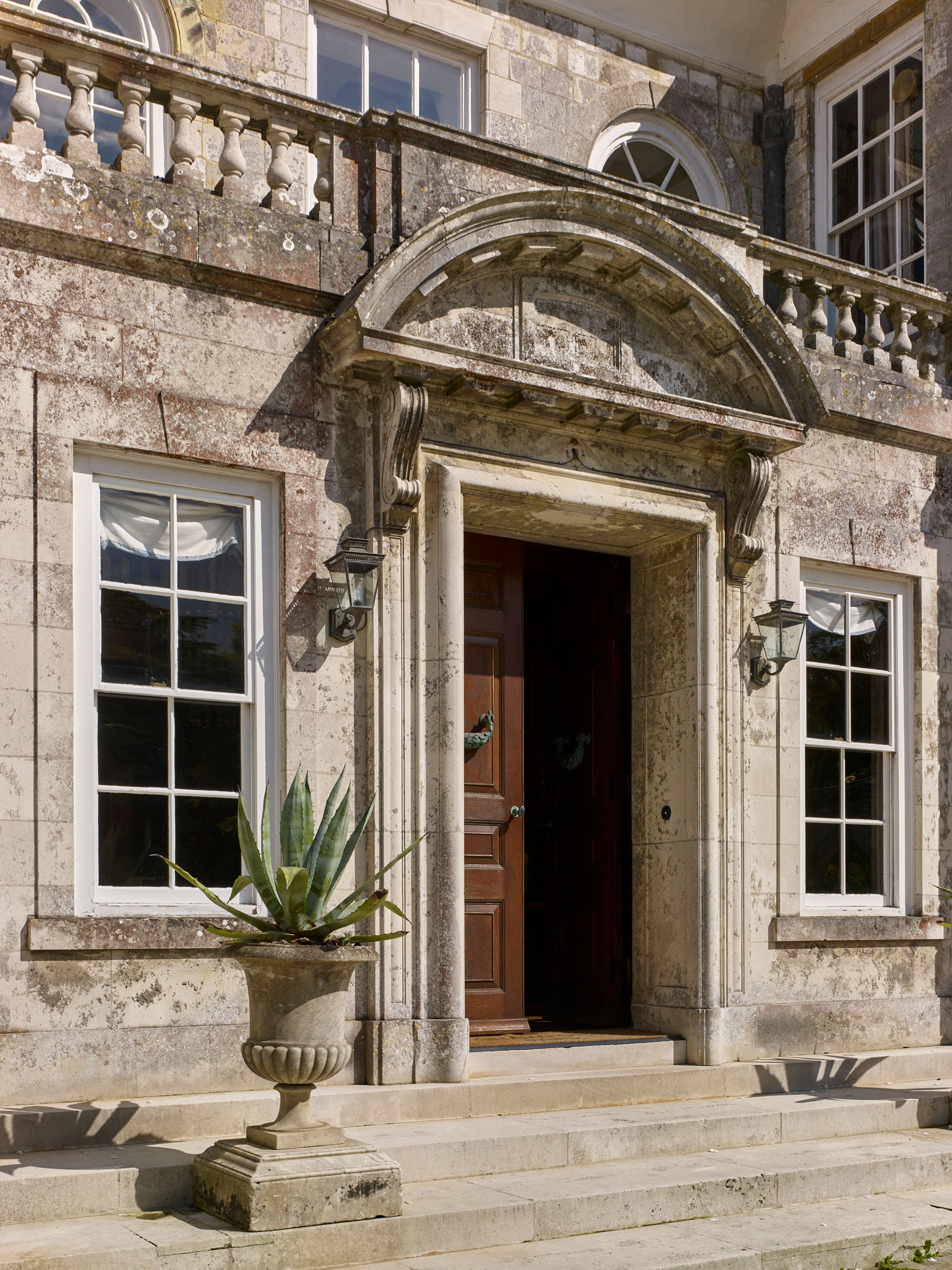
Closer to the house, the Mallinsons have installed a stone basin in the entrance court and repaired the sunken garden, which was subsiding. There is now a fountain in the central pool and yews topiared as corkscrews. They have also enlarged the terrace around the saloon or drawing room.
On one side is a swimming pool in the form of a pond that they inherited and, beside that, is a wide lawn formerly enclosed by a yew hedge. Mr Wilkie suggested replacing the deteriorating hedge with an earth berm and a ha-ha to keep out the deer, which creates an elevated walk with views back to the house and across the garden. At the angle of the berm is a bastion with a figure by Antony Gormley looking out over the landscape. It’s hard to imagine a more idyllic prospect.
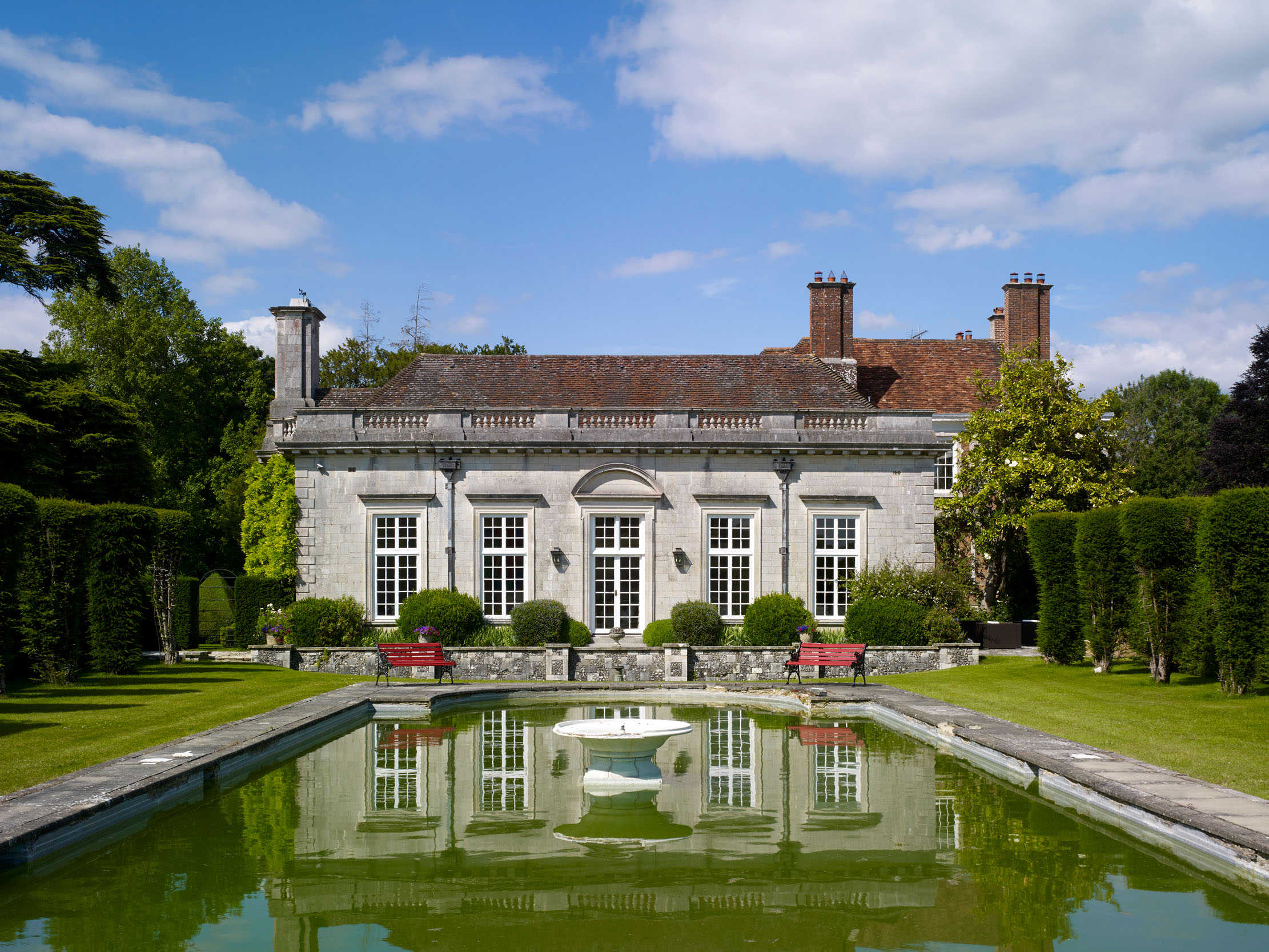

The tale of Avington Park: ‘I have just bought a house. It doesn’t have five bedrooms, but 50. I think you should probably come home.’
Avington Park, Hampshire — the home of Sarah and Charlie Bullen — is a home with rather astonishing history that’s
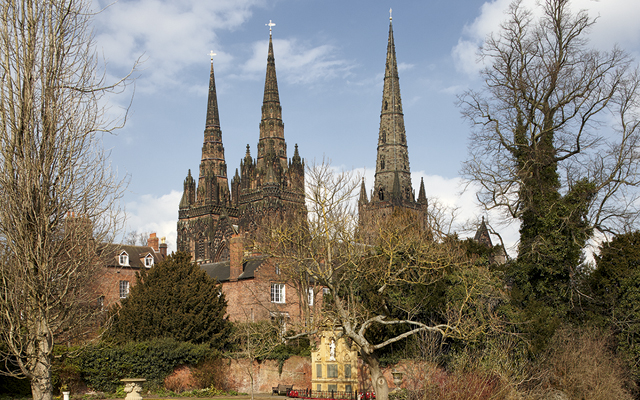
Gothic for the Steam Age: An illustrated biography of George Gilbert Scott by Gavin Stamp
John Goodall is impressed by this concise and beautifully illustrated account of Scott's achievements.

John spent his childhood in Kenya, Germany, India and Yorkshire before joining Country Life in 2007, via the University of Durham. Known for his irrepressible love of castles and the Frozen soundtrack, and a laugh that lights up the lives of those around him, John also moonlights as a walking encyclopedia and is the author of several books.
-
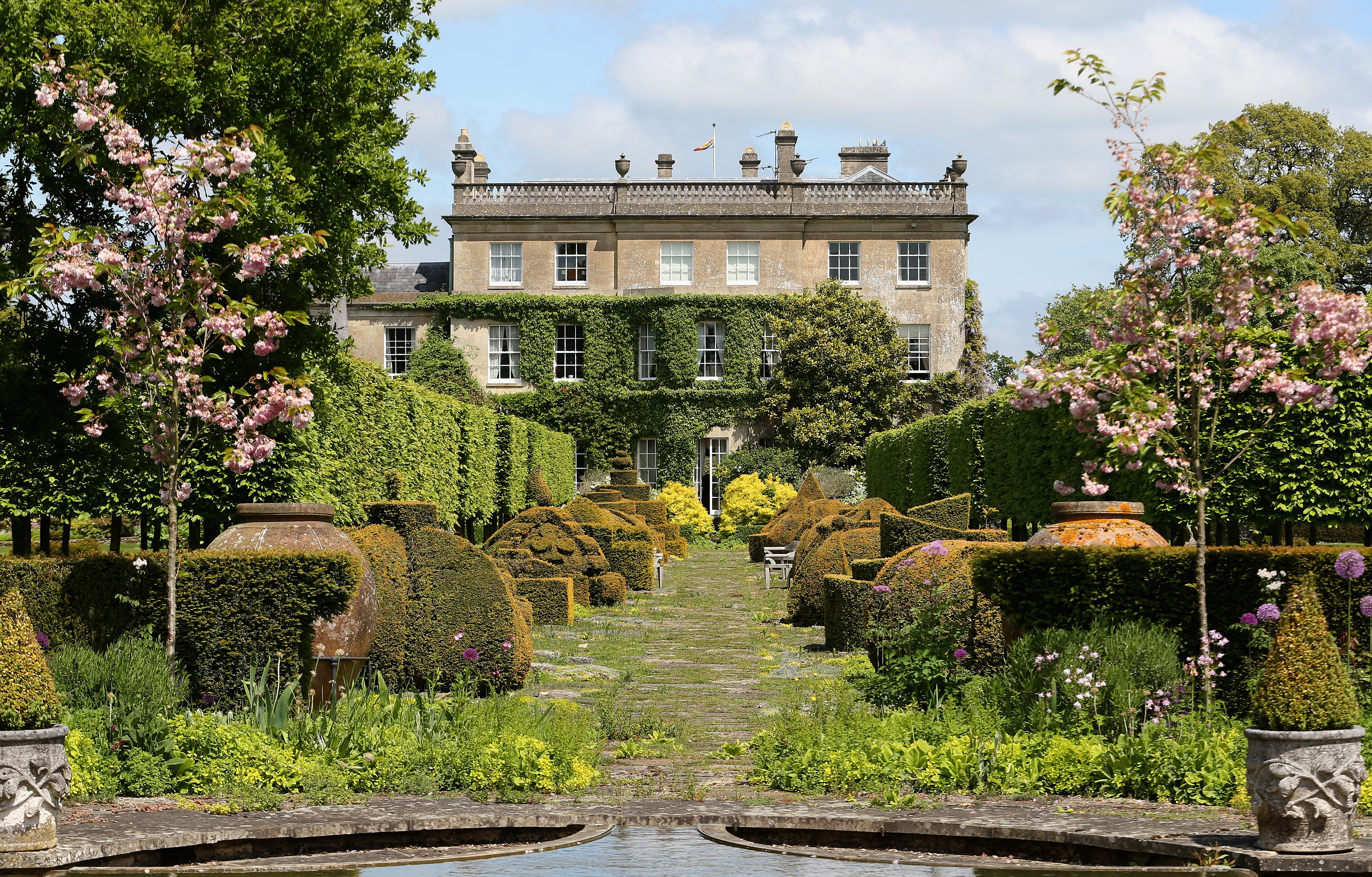 Sanderson's new collection is inspired by The King's pride and joy — his Gloucestershire garden
Sanderson's new collection is inspired by The King's pride and joy — his Gloucestershire gardenDesigners from Sanderson have immersed themselves in The King's garden at Highgrove to create a new collection of fabric and wallpaper which celebrates his long-standing dedication to Nature and biodiversity.
By Arabella Youens
-
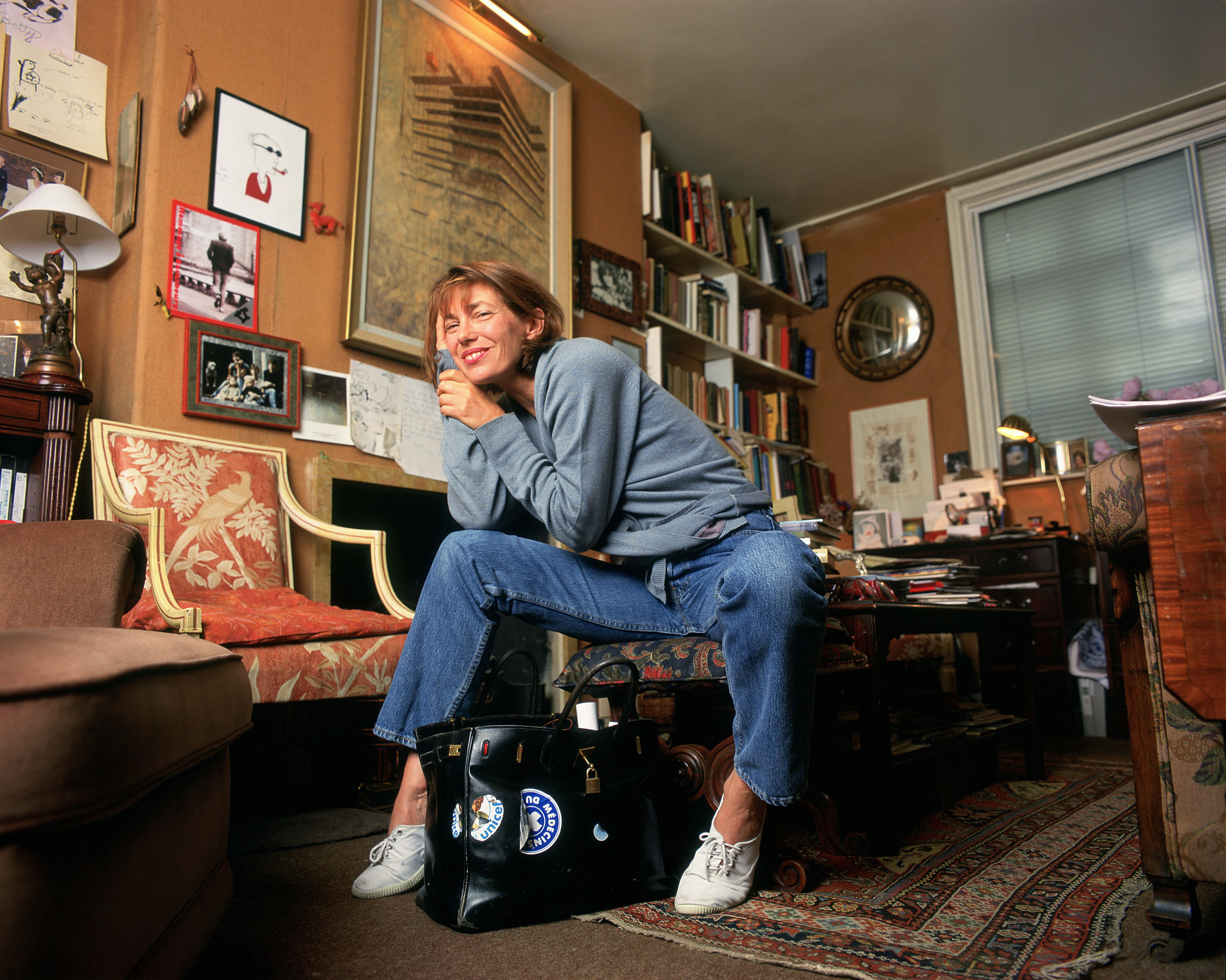 The coveted Hermès Birkin bag is a safer investment than gold — and several rare editions are being auctioned off by Christie’s
The coveted Hermès Birkin bag is a safer investment than gold — and several rare editions are being auctioned off by Christie’sThere are only 200,000 Birkin bags in circulation which has helped push prices of second-hand ones up.
By Lotte Brundle